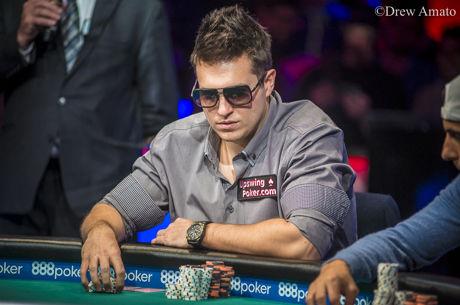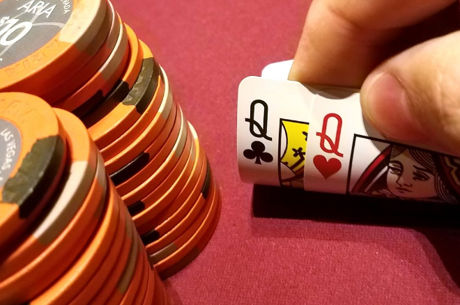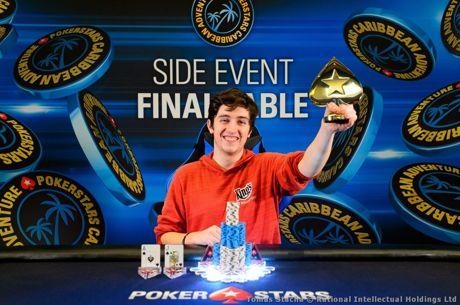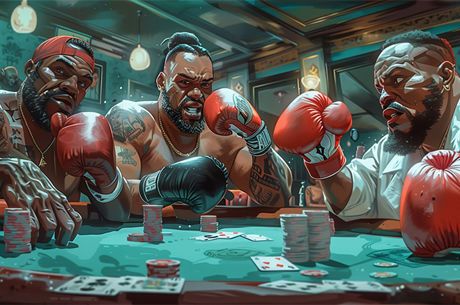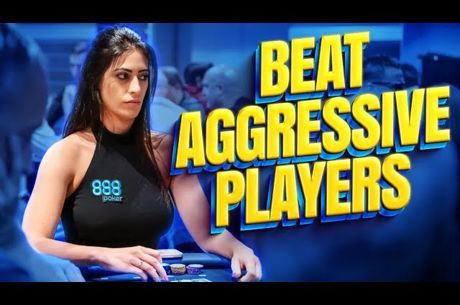3 Game-Changing Lessons I learned From Prat's Tournament Master Class
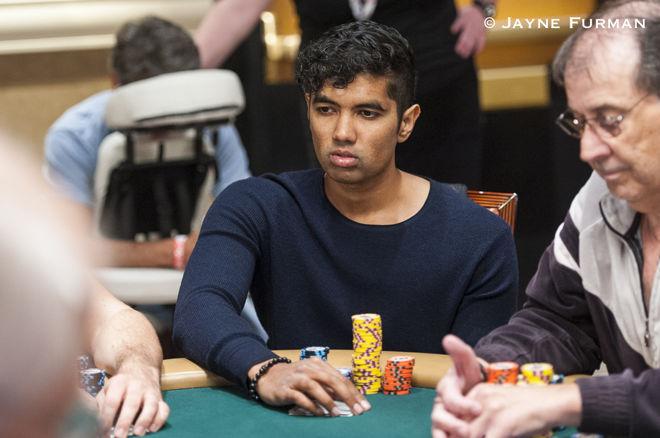
An article by Ben Ward.
A few years back, I was the champ of disappointing tournament finishes.
Getting stacked on the first hand? Check. Busting on the stone bubble? Done it. Folding my way to a min-cash? Yep. Making a final table, only to bust in 9th place? Oh yes.
No matter how many tournaments I played, I was never able to catch the big money up top.
No matter how many tournaments I played, I was never able to catch the big money up top. But after so many attempts, I came to accept that my poor results weren’t only because of bad luck. My game was full of holes, and I needed help to fill them.
My biggest struggle was adjusting to the many different stages of tournament play, so I needed coaching material that covered a range of topics. So, I went with UpswingPoker’s Tournament Master Class by tournament specialist Pratyush Buddiga (lead image). This course equipped me with the strategic fundamentals necessary to avoid mistakes at all stages of a tournament.
Today I’ll share 3 of the most game-changing lessons I learned from Prat inside the Tournament Master Class.
#1 Antes Significantly Change Preflop Ranges
Since I had a background in cash game poker, I assumed that my knowledge of opening ranges for each position would translate to the tournament world. How wrong I was.
Pratyush’s raise-first-in (RFI) ranges from the Tournament Master Class showed that we can open a much wider range of hands in tournaments compared with cash games (assuming antes are in play). This is because we are getting better pot odds with the increased dead money in the pot, meaning we don’t need our opening range to have as much equity.
Here is the middle position RFI range recommended by Prat. You can see the difference for yourself:
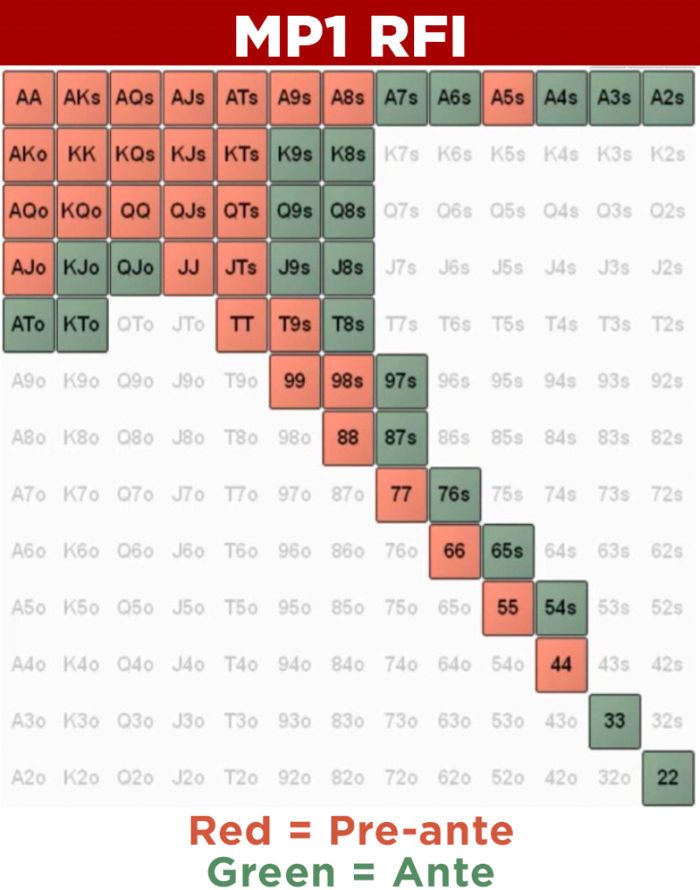
As the chart above shows, we can profitably open many more hands when antes are on the table—an additional 128 combinations.
Prat constructed RFI ranges like these for every position, specifically for Tournament Master Class members. The ranges are downloadable, and each chart is explained in detail in the ‘Preflop RFI’ video.
These ranges have made my own preflop decision-making an absolute breeze. Prat has done all the hard work for me!
#2 Short-Stacked Play: Push/Fold Isn’t Always Best
Prat also refined my short-stacked game by showing me that there is more to think about than just all-in or folding. While using a push/fold strategy is still profitable—apps like SnapShove make it very easy to implement—it is not always the best way to make the most chips.
This topic is addressed in the ‘Short Stack Preflop Adjustments’ video. When we have 14–15bb in our stack, it will often be most effective to use a mixed strategy, which consists of the following plays:
- Raise and call a shove (raise-call) with some of the strongest hands in our range, such as JJ+.
These hands are too strong to raise-fold but too weak to raise-call, so shoving is our only good option.
This tactic will induce action from worse hands that would not have continued versus a shove.
- Raise and fold to a shove (raise-fold) with hands that are worth playing but are slightly too weak to open-shove, such as suited connectors or the weakest offsuit broadways
This tactic gives us a profitable opportunity to steal the blinds and antes without putting our entire stack on the line.
- Open-shove hands that profit as shoves and don't fit one of the above categories, such as JTs, 22 or A5s.
These hands are too strong to raise-fold but too weak to raise-call, so shoving is our only good option. Shoving also maximizes our fold equity, which is important with hands that play poorly postflop (e.g., 22 or A5s).
Note that the specific hands in these categories vary by position. For example, AQs is almost certainly strong enough to raise-call from the button, but such a hand should be open-shoved from early position.
This mixed strategy allows us to play (and profit with) the widest possible range.
Below is a chart constructed by Pratyush for when action has folded to us in the CO with 14bb:
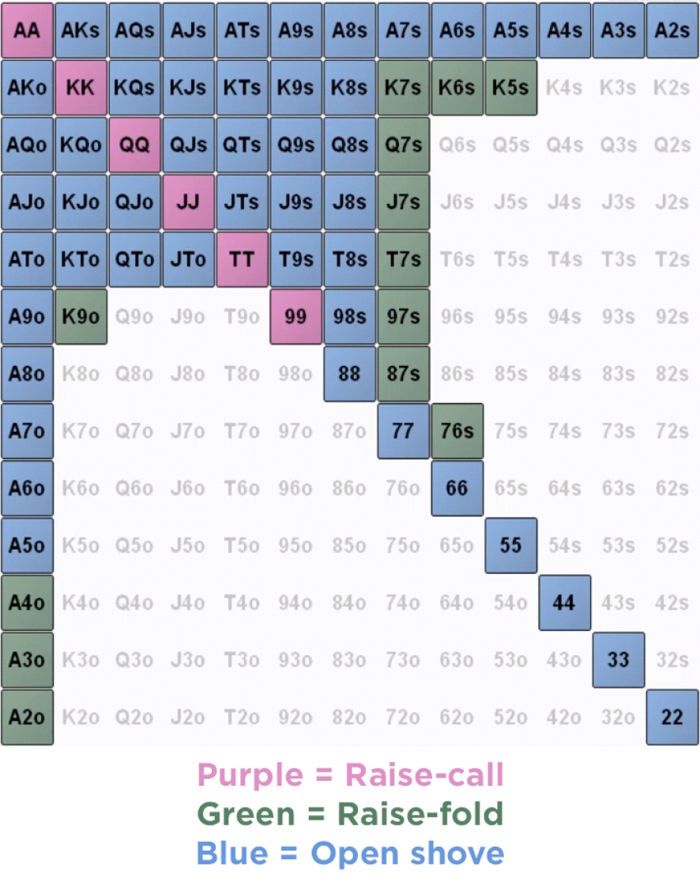
This chart represents 34% of all hands. By comparison, a shove or fold strategy would only allow us to play 31% of hands. That's a solid ~9% increase in total hands played, which is just 9% more profitable opportunities for us.
#3 Call More from the Big Blind
Another crucial element of preflop tournament ranges is how wide we can justifiably defend by calling from the BB. Pratyush and Doug Polk explain that the majority of players severely misplay this position. This issue is addressed in the ‘Big Blind Defense’ video.
We are getting the odds to call with almost every hand.
With antes in play in addition to our 1bb already committed to the pot, we are getting the odds to call with almost every hand. And the fact that smaller opening sizes are commonly used in tournaments (2–2.5x) makes our pot odds even better.
Suppose we're in the big blind at a 9-handed table where the blinds are 50/100 with a 10 ante, and the cutoff raises to 225. In this spot, we only need 25% equity to profitably call. Versus the BTN RFI range taken from the Tournament Master Class, the BB can theoretically defend by calling with 100% of hands and still surpass the required 25% equity threshold:
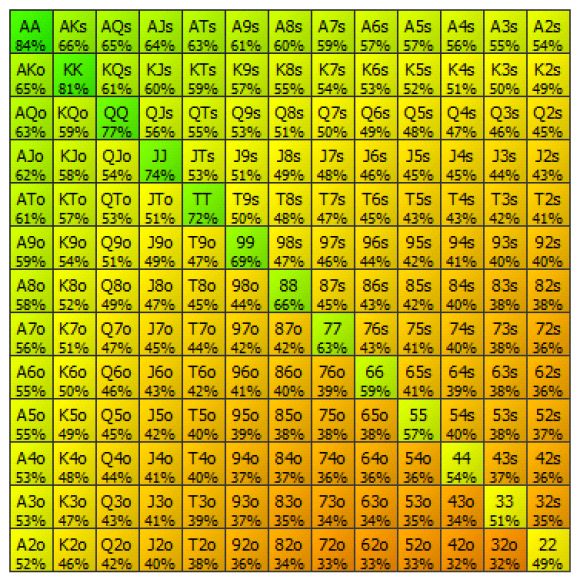
As the above equity matrix demonstrates, even the worst-performing hand in this range (32o) has more than enough equity versus the BTN’s RFI range to justifiably call. This isn’t to say that we should start calling 100% of hands from the BB. The weakest hands in this range will have trouble actually realizing their equity, because they will often have to fold on the flop or turn.
However, let this example serve as proof that you should often times defend your BB to an open-raise, even with marginal hands. Don’t over-fold like so many others do!
Become a Tournament Master
It takes more than a few tips to become a real expert in the tournament format, and the 30 hours of content and downloadable resources in Tournament Master Class have set me up with everything I need to get there.
Learn more about Tournament Master Class here.
Sponsor generated content by Upswing Poker (written by Ben Ward)

